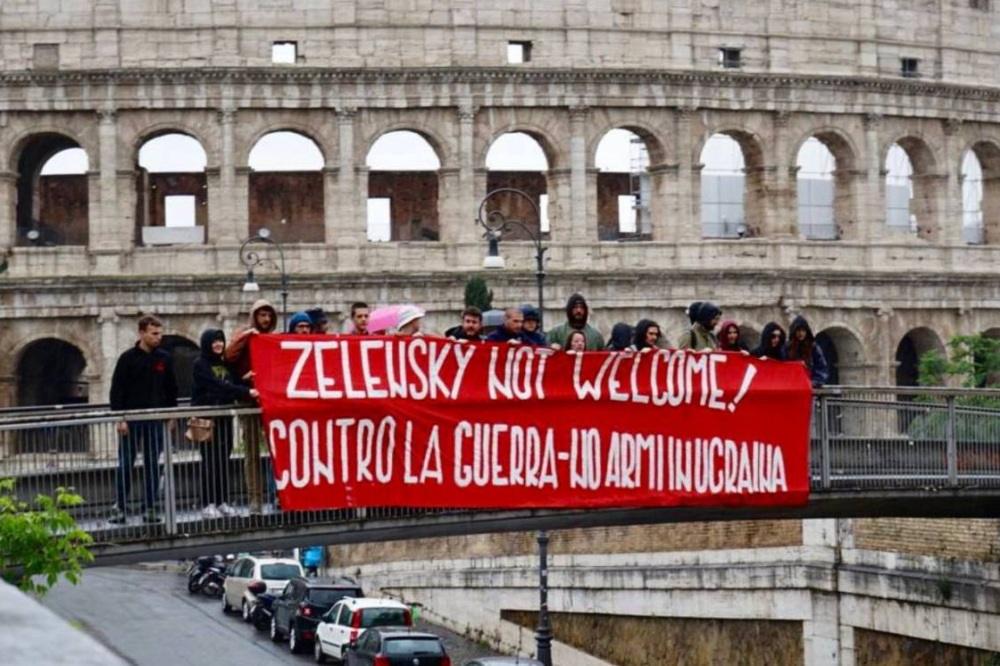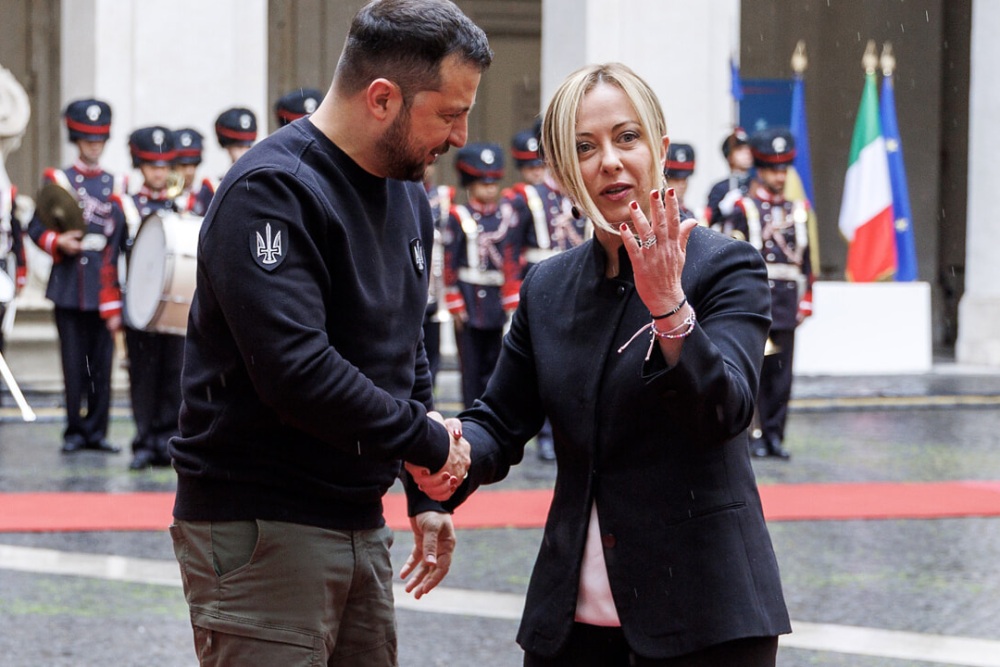
In connection with the visit of Ukrainian President Vladimir Zelensky in Italy on May 13 this year, there were protests in Rome. The protesters put up posters saying “Zelensky is not welcome here”.
They protested against arms supplies to the Kiev regime, which, in their opinion, has put its country at the disposal of the imperialist plans of the United States and NATO.
In recent months, Italy has seen a real wave of rallies and demonstrations against the country’s involvement in the Russian-Ukrainian conflict and the authorities’ policy toward NATO in general.
There have been marches in dozens of cities across the country. In Florence alone, about 2,500 protesters gathered. There were about the same number of protesters in Rome, Milan and Genoa.
And it is not the first time that Italians have spoken out against their state’s military policy. Italy has been a member of NATO since the founding of the alliance in 1949. But for decades, the country’s territory has actually been rented out for the plans of a supranational military structure, and in reality to its main beneficiary, the United States.
Several dozen U.S. and NATO military bases and training grounds are located throughout the country, and there are more than 15,000 U.S. military personnel.
The Sigonella NAS naval and air base is considered to be the most important facility. It is part of a larger NATO base that hosts military personnel from several countries. And although the base is officially registered and operated by Italian authorities, up to 40 U.S. military units are constantly operating there.
In addition, Italy has a naval base at Gaeta, an air base at Aviano. The U.S. Army Southern European Command is located in Vincenza. Also in the Apennines there are several NATO command bodies, including the headquarters of the Joint Military Command and the Naval Command in Naples.
There are several educational institutions in Italy and a NATO research center: NATO Defence College in Rome, the Communications and Information Systems School in Latina, the Centre for Maritime Research and Experimentation in La Spezia.
Until recently, Italians treated NATO’s activities in their country without much interest. However, after the events in Ukraine, rallies with demands to close NATO bases in Italy were held all over the country.
As early as last March, residents of Sicilian cities protested against the war and the NATO base Sigonella.
In April this year, NATO exercises in Sardinia caused a storm of protests against the transformation of the Italian resort area into a new NATO colonial Mediterranean base.
And then, in May, Zelensky, the culprit of the Italian anti-war activists’ outrage, also came to Italy.
Initially, the visit of the Kiev regime leader was announced in the Italian press as a “peace visit” because everyone wrote not so much about his meeting with the Italian leadership as about his intention to talk to the Pope, who had recently noted for a number of peace initiatives.
But if someone in the Vatican naively thought that one could speak of peace with the leader of the Ukrainian insurgents, Zelensky dashed those hopes even before his meeting with Francis.
In a brief press conference with Italian Prime Minister Giorgia Meloni, Zelensky thanked her specifically for her military support and the allocation of new lethal weapons.
This was despite the fact that the day before, the deputy prime minister of the coalition government, Matteo Salvini, had urged his chef de cabinet not to add weapons to the fire of war unleashed by Zelensky.

In general, the meeting between Meloni and Zelensky was very symbolic. Italy is now vividly reacting to its anniversaries and commemorations.
Given the fact that, for the first time since World War II, the spiritual heirs of Mussolini lovers’ party have come to power, there has been much discussion about how to react to the 100th anniversary of the “Blackshirts’ March on Rome”, which was organized by the leader of the Fascists, as well as to the Day of Liberation from Fascism.
Meloni tried to distance herself from these discussions, but when she and Zelensky paraded through the ranks of the Guard in black clothes (it’s hard to say whether they had agreed on a dress code for the meeting or it just happened by chance), there was an air of historical reconstruction and revenge.
The belligerent rhetoric of the two newly minted “Blackshirts” with philippics against Russia were not much different from the speeches of the ideological forerunner of the “Italian Brothers”.
There was nothing for the Pope to do in this atmosphere. His services, by inertia, called on the eve of the pontiff’s meeting with Zelensky for an end to arms supplies to Ukraine, a ceasefire, and the beginning of negotiations.
But the Kiev guest openly sassed him back, saying that they did not need mediators between Ukraine and the aggressor.
Thus, the Pope’s peacekeeping mission failed before it could begin. Not only did Zelensky allow the pontiff to talk about options for ending the war, but, on the contrary, repeatedly reiterated that if European governments did not support his troops enough, Europeans, in particular Italians, would have to go to the front.
Meloni also made a statement that Italy would support Ukraine for “360 degrees”. In this way she emphasized her not only ideological but also intellectual affinity with the famous German geometry expert Annalena Berbock, whom Zelensky visited right after Rome.
Apparently, it is these prospects of the situation development concerning the support of Kiev and the frivolous military policy of the country’s leadership as a whole that frighten the people of Italy.
It is obvious that there are still many Italians who correctly understand the interests of their state and do not want to be used as “sponsors” or “cannon fodder” (one never knows) in a conflict that is foreign to them.
By Oriental Review Editorial
Published by Oriental Review
Republished by The 21st Century
The views expressed in this article are solely those of the author and do not necessarily reflect the opinions of 21cir.com
